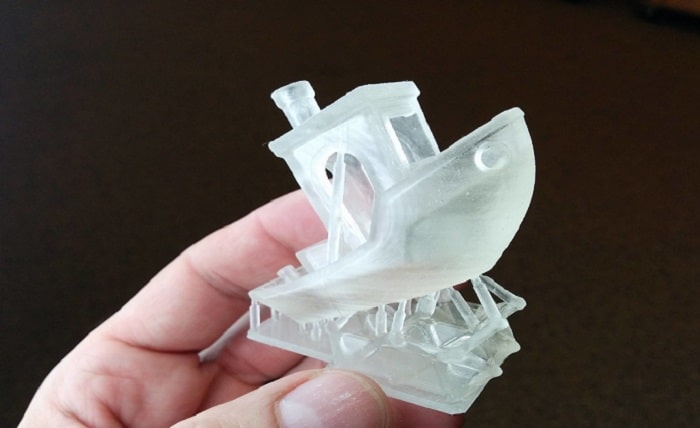The Magic of Resin Printing: Explore Thousands of 3D Print Files

Resin 3D printing has captivated the craft and maker community with its incredible detail and precision. Unlike filament-based printers, resin printers utilize UV light to solidify the liquid resin, producing smooth, intricate models ideal for miniatures, jewelry, figurines, and beyond. But the magic truly lies in the endless possibilities offered by thousands of readily available 3D print files.
Whether you’re a seasoned veteran or a curious newcomer, navigating the vast ocean of resin print files can seem daunting. This comprehensive guide serves as your compass, helping you chart your course through curated platforms, explore different types of files, and unlock the full potential of your resin printer.
Free vs. Paid Files: Finding Your Treasure Trove
The beauty of resin printing lies in its accessibility. Countless websites offer a plethora of free 3D models, catering to every whim and interest. Popular platforms like Thingiverse, Cults3D, and MyMiniFactory boast vibrant communities uploading and sharing their creations. From functional household items to intricate figurines and game miniatures, there’s something for everyone.
However, venturing into the world of paid files unlocks a whole new level of detail and complexity. Professional designers upload premium models on platforms like CGTrader, Gumroad, and Patreon, offering breathtakingly realistic characters, detailed scenery, and unique props. While requiring an investment, these high-quality files often come with support pre-configured, ensuring a smoother printing experience.
File Formats: Knowing Your ABCs
While STL files reign supreme in the 3D printing world, resin printing benefits from additional formats tailored for precise details and complex geometries. Here’s a quick rundown of the most common file types you’ll encounter:
- The standard format, compatible with most 3D printing software. Ideal for simple objects and low-poly models.
- Similar to STL, but can store additional information like vertex colors and textures. Great for complex models with multiple parts.
- A resin-specific format that includes pre-configured supports and slicing settings for specific printers. Saves time and simplifies the printing process.
- A newer format that encapsulates all printing parameters within the file, including material settings and support structures. Offers superior workflow, especially for beginners.
Beyond Models: Embracing the Ecosystem
The world of resin printing extends far beyond the 3D files themselves. A thriving ecosystem of tools and resources empowers you to take your 3D creations to the next level. Popular software like Chitubox and Lychee Slicer provide intuitive interfaces for slicing your models, adding supports, and managing printing parameters. For post-processing your prints, dedicated tools like sanding sticks, UV lamps, and curing stations ensure a professional finish.
The Craft: Essential Tips for Resin Printing Success
Even with the most intricate files and advanced tools, resin printing has its own set of challenges. Here are some essential tips to ensure smooth sailing:
Dial in your settings: Fine-tune your printer’s UV power, exposure times, and retraction settings for optimal results. Refer to your printer’s manual and online resources for guidance.
Support like a pro: Properly placed supports are crucial for successful prints. Utilize automatic support generation in your slicing software or manually add supports for complex areas.
Tempering the resin: Maintain optimal resin temperature for even flow and precise printing. Consider using a heater or placing your printer in a warm environment.
Post-processing with care: Wash and cure your prints thoroughly to remove leftover resin and achieve a durable finish. Use dedicated solvents and UV lamps for optimal results.
Your Creativity: Resin Printing for Every Passion
The applications of resin printing are as boundless as your imagination. Here are just a few inspiring ways to bring your ideas to life:
Tabletop gaming: Craft stunning miniatures and dioramas for your favorite board games and RPGs.
Cosplay and Props: Create intricate costumes and props for cosplay events and theatrical productions.
Fine art and décor: Design and print unique sculptures, jewelry, and home décor pieces.
Functional creations: Print practical household items like organizers, tools, and replacement parts.
Conclusion
Resin 3D printing is not just a technology, it’s an invitation to unleash your creativity and push the boundaries of what’s possible. With countless free and paid 3D files at your fingertips, powerful tools to refine your process, and endless applications for your creations, the only limit is your imagination. So, dive into this exciting world, experiment, and watch your ideas come to life in exquisite detail. Remember, resin printing is a journey, not a destination. Embrace the learning curve, revel in the successes, and keep challenging yourself with new projects. Soon enough, you’ll be confidently navigating the vast ocean of possibilities, transforming digital dreams into breathtaking tangible realities.
FAQ
- What is the best resin printer for beginners?
There’s no single “best” printer, but popular choices for beginners include the Anycubic Photon Mono SE, Elegoo Mars 3 Pro, and Phrozen Sonic Mini 4K. Consider factors like budget, build volume, and resin compatibility when making your decision.
- Is resin printing safe?
Resin printing requires caution due to the use of potentially harmful chemicals. Always wear gloves and a mask when handling resin, avoid contact with skin, and ensure proper ventilation in your printing area.
- What are some good resources for learning more about resin printing?
Online communities like Reddit’s r/resinprinting and YouTube channels like 3D Printing Nerd offer valuable advice and tutorials. Additionally, manufacturer websites and online forums for specific printer models provide helpful resources.
- Where can I find inspiration for my resin printing projects?
Social media platforms like Instagram and Pinterest are teeming with stunning resin print creations. Websites like Thingiverse showcase popular models, and dedicated communities often host design challenges and contests.
- How can I share my own resin prints with the world?
Upload your creations to online communities like Thingiverse and Cults3D, or share them on social media using relevant hashtags like #resin3dprinting and #3dprinted. Connect with other makers, inspire others, and become part of the vibrant resin printing community.



